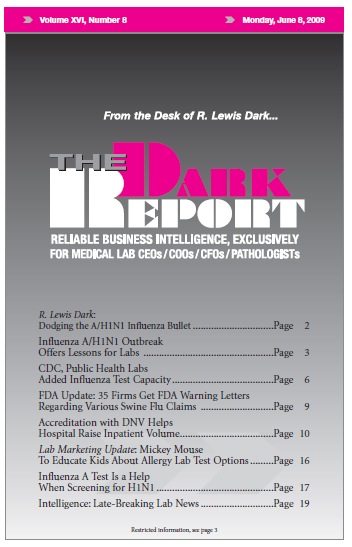CEO SUMMARY: Discovery of the A/H1N1 strain of influenza made it imperative that public health laboratories in the United States, Mexico, Canada, and other countries have more molecular testing capacity and capabilities in support of efforts to track and control the outbreak. Applied Biosystems, a division of Life Technologies Corporation, stepped into the breach, upgrading …
CDC, Public Health Labs Added Flu Test Capacity Read More »
To access this post, you must purchase The Dark Report.


